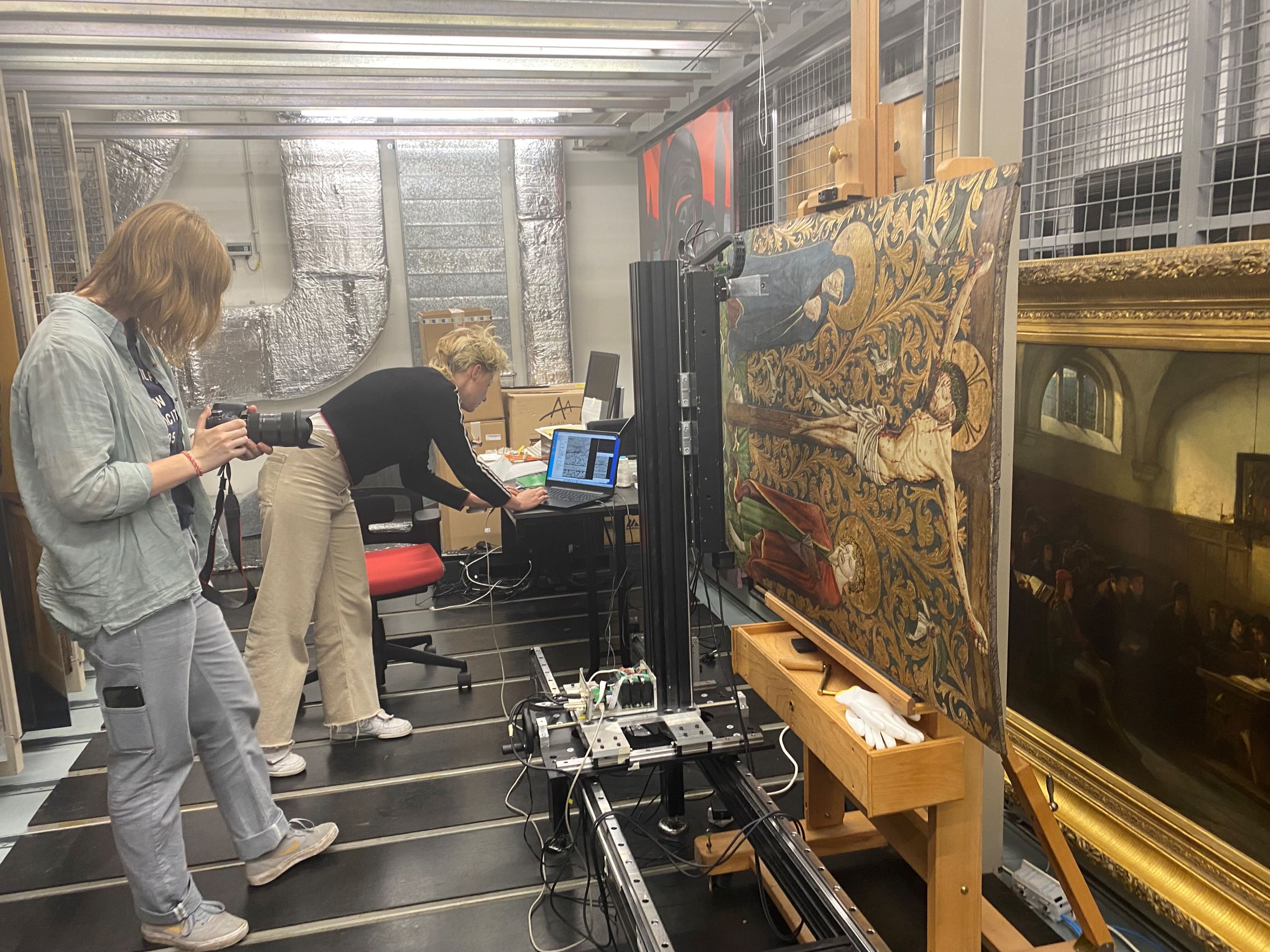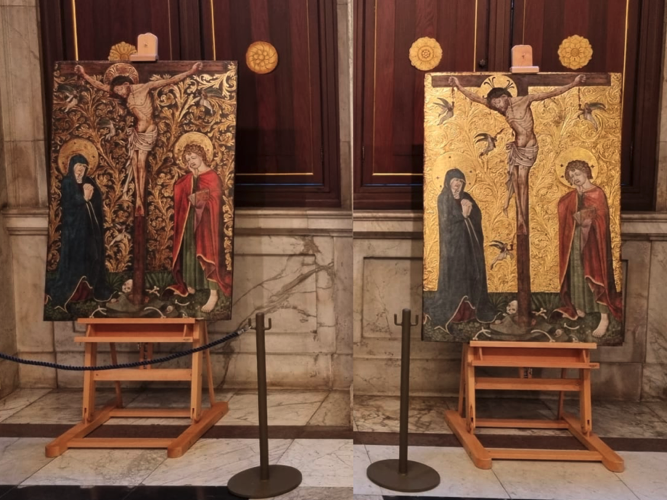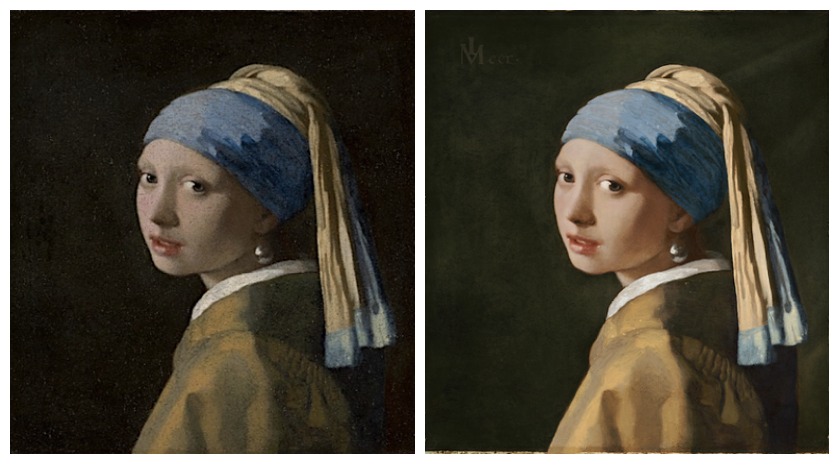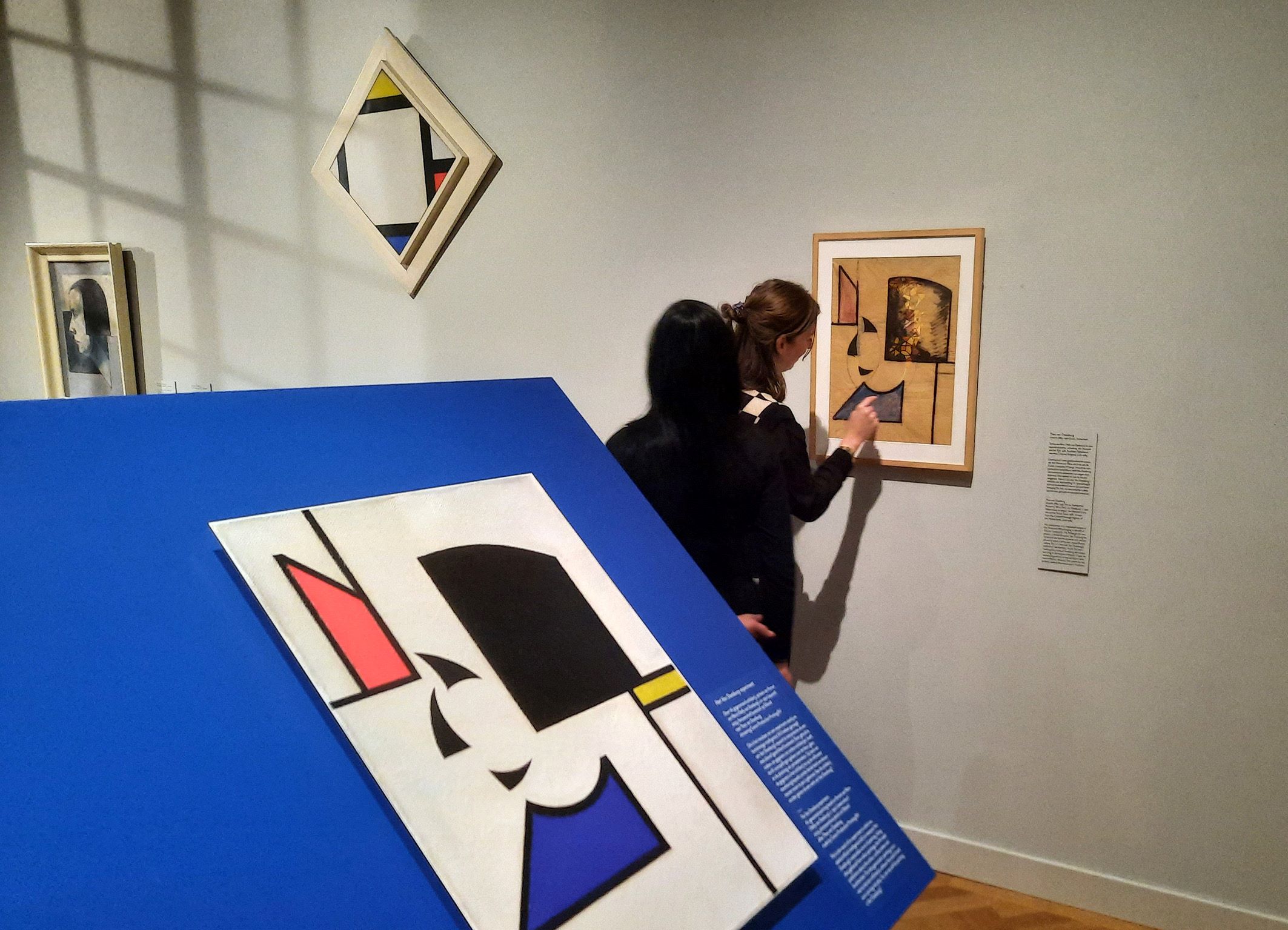
‘A reproduction can make the original important again’
For her research, PhD candidate Liselore Tissen put one famous painting after another through a 3D scanner. The resulting reproductions were indistinguishable from the originals. But what does this mean for our interpretation of art?
A half-burned Rembrandt, a panel of Christ on the cross, and the Girl with a Pearl Earring: all of them have been scanned in 3D by Tissen over the past few years. ‘When 3D printing first emerged, people thought these prints would take over the world,’ she explains. ‘For a long time, that was the reason museums wanted to steer clear of anything related to 3D prints. If you can mimic all the material aspects so well, why would you still need a museum full of originals? With my research, I've shown that it’s not that simple. Art is much more than just the material. A reproduction can actually make the original important again, paradoxical as that may sound.’
How it used to be
To substantiate this claim, Tissen has conducted a number of case studies. One such study involved a crucifixion scene at the Catharijneconvent Museum in Utrecht. The background of that piece has been blue since the seventeenth century, but it was once gold. ‘The piece was intended to hang in a church lit by flickering candlelight,’ Tissen explains. ‘The gold does something completely different from the current blue, because it interacts with the light: the blood of Christ, painted with matte paint, contrasts much more strongly with the gleaming gold than with the blue. The piece’s function would come through much more clearly if the gold were reconstructed, but restoration rules forbid removing the blue background. With a print, you can still show how the piece originally functioned, without having to make such drastic decisions.’
With these new techniques, it’s also possible to show paintings as they were right after they were completed. ‘We did this with Girl with a Pearl Earring,’ Tissen says. ‘Because we have so much data about that painting, we were able to reconstruct it very accurately to how it originally looked, with eyelashes, rosy cheeks, and a green drape in the background.’
-

Scanning of the crucifixion scene -

Blue background on the left, gold on the right -

The current Girl and the Girl Vermeer knew -

The Doesburg exhibition
Sparking a debate
The reproduction was then shown to visitors to spark a discussion. What is an original when an indistinguishable 3D print might actually come closer to the artist's intent? What should we restore, and what should we leave as it is? And how does it feel to suddenly see such a famous painting in a different form? ‘Together with other researchers, I measured visitors’ reactions,’ Tissen says. ‘Some visitors were shown a poster or mug with the Girl with a Pearl Earring first, while others saw a 3D print first. We wanted to see if this influenced their response.’
And yes, it did. Visitors who saw a reproduction first were more emotionally moved than others. ‘Even people who previously disliked the piece suddenly found it quite special,’ Tissen notes. ‘That’s because emotions are personal, and you can interpret a 3D print however you want. With an original, people are often more afraid of getting it wrong, of not understanding something important. So the technology can help make art more accessible.’
This was also evident in a case study on the work of Theo van Doesburg at Museum de Lakenhal. Tissen replaced much of the usual textual explanations about the works with reproductions. ‘I’m not a fan of those long blocks of text,’ she explains. ‘With a reproduction, you can make much of that explanation visible, for example by zooming in on cracks in the paint or important details.’
Feeling and talking
Ultimately, Tissen hopes the use of reproductions will help democratise art. ‘It’s often seen as something for the elite, something you have to have grown up with or studied to understand, but I want to know what “ordinary” visitors or people who wouldn’t normally go to a museum think and feel.’
It’s no coincidence that her thesis ends with the work of Mark Dion, who created a cabinet of curiosities featuring neon-painted 3D prints of historical objects from the Leiden collections, such as those from Naturalis, the Boerhaave Museum, and the University Library. The objects are scattered around a dark room, and the artist has imposed his own structure. Everyday objects like an apple have been blown up to the size of iconic objects, such as a bust of Descartes.
‘As a result, it’s not clear if you should be looking from left to right, what the intention is, or what the meaning is. All the imposed rules we know when it comes to art fall away, and it no longer matters what’s original or a reproduction. The only thing you can do is feel, experience, and afterwards talk to each other about your personal interpretation.’
